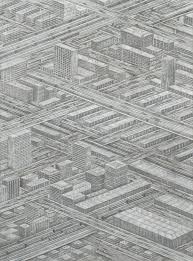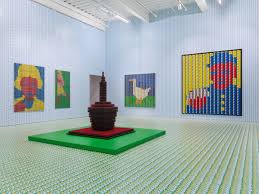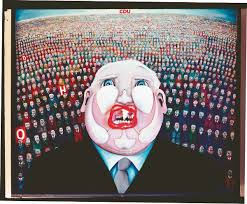THOMAS BAYRLE’S ART IN MODERN LIFE
- Alessandro Berni

- Jun 29, 2018
- 3 min read
One of the most important artists to have emerged during the 1960s in West German economic, Thomas Bayrle has received belated recognition for his influential works and processes. Long before the advent of current visual technologies, he foresaw our digital reality, employing photocopy machines and other midcentury tools in his early works to create analog visualizations of what are now fundamental traits of our digital culture. Bayrle’s thematic investigations have ranged from a visual analysis of mass culture and consumerism to reflections on the intersection of technology with global politics.
Thomas Bayrle is a pioneer of Germany pop art, he is best known for his super form large images composed of iterations of smaller cell like images humorous, satirical and often political, his paintings, sculptures, and digital images are commentaries on the systems of control and domination in a rapidly globalizing economy, via allegorical references to traffic patterns, mass production and generic designs of popular goods such as wrappers and wall papers, Bayrle draws readily on his experience of cold war Germany as a microcosm of broader power struggle in {1980} is among Bayrle most recognizable works a sculptural wall relief of a dollar sign shaped cardboard motorway littered with plastic vehicles meticulously painted and arranged in line with the colored on Piet Mondrian.
Bayrle’s work has also looked at the proliferation and uniformity of the global mega-city and its infrastructure networks. The show brings together a number of works created by Bayrle starting in the 1970s that model anonymous grids of city blocks and highways—works he initially envisioned while working as a jacquard weaver and staring into the hypnotic patterns of the thread crossings. Also during this period, Bayrle began to directly address the seductive nature of technology by creating paintings, paper assemblages, and kinetic sculptures that adopt the language of religious icon and symbols. Over the past several decades, his working methods have expanded to incorporate the sort of digital technologies his earliest work anticipated. He was one of the first artists to experiment with computers, and this presentation explores his innovations across a variety of media including paintings, films, and tapestries.
During late 1960s the two artists, Thomas Bayrle and Jacques Tati began similar work about cities, Jacques Tati was an actor who had released comedy films like {playtime}, the artist had received an honorary award for his film, which he had released during that time, set in colorless version of modern Paris Thomas Bayrle also won a bright punchy commercial art award, apart from winning the award of commercial art, he also won lots of awards concerning art, Bayrle presented his work in some of largest museums which are well displayed and kept. The two artists have much in common, in Tatis artwork cities were shown in the scenes where the boxy buildings and cars are related to Bayrle art. Thomas Bayrle admires Tatis work but the similarities between their work run deeper than imitation.
But perhaps it’s because Tati and Bayrle have such conflicted feelings about their subject matter that they give their audiences so much latitude in deciding what to feel. Tati went bankrupt building the ersatz skyscrapers he satirized in Playtime, and Bayrle continued cashing checks from his works, exactly the kinds of companies whose employees might work in the pathetic little buildings featured in City. That’s why, in the end, it’s not enough to say that these two great artists are appalled by the growth of the modern European city. They’re also amused, confused, hypnotized, and more than a little bit terrified.











Comments